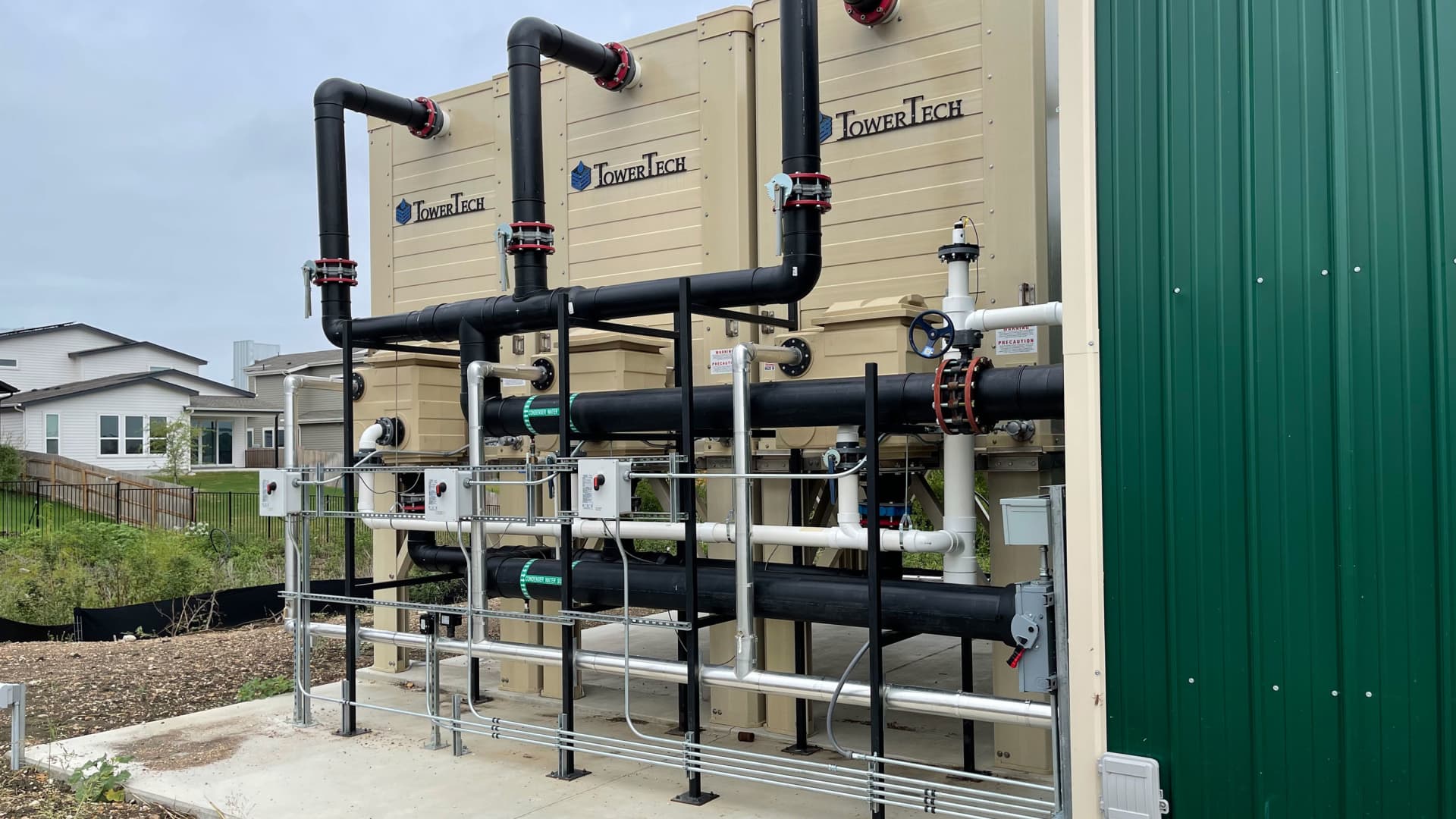From above, the 2,000-acre new housing development just outside Austin, Texas, looks much like any other. Each home has solar panels, but that’s no longer uncommon.
But the Whisper Valley community is entirely unique thanks to what lies below. Far below.
The master-planned community, which will eventually include multifamily units and garden apartments in addition to single-family homes, is built atop an enormous geothermal grid. It’s the largest ever created for a residential community – essentially a blueprint for greener living. It is also saving its residents thousands of dollars in energy bills.
The geothermal grid will heat and cool every home in the community, which, when completed over the next decade, will have more than 7,500 homes. Home construction is still in the beginning phases, with the first homes about two years old, but before any foundations were laid or framing begun, bore holes were drilled in front of every single lot and piping laid to complete the grid.
Geothermal heating and cooling is achieved by accessing the constant temperatures deep underground and then using water to circulate that temperature up above. EcoSmart Solutions, a subsidiary of the community’s developer, Taurus Investment Holdings, built energy centers that send water 300 feet underground to access that moderate earth temperature.
“If you just traveled down below your feet, 30 to 40 feet, it’s a constant temperature 72 to 74 degrees. Even on the hottest days, it’s 72 to 74 degrees, and even when there’s snow on the ground,” explained Greg Wolfson, chief technology officer for EcoSmart.
The geothermal systems in each home look much like a small furnace box. They are powered by electricity, but since each home also has solar panels, the system will not go off in the event of a power failure. Homeowners can opt for a full home battery backup that stores the solar energy for use at night.
Thurman Homes is one of five builders at the development.
The beauty of the system is that for us as the builder there is very little that has to be considered outside the normal building practices,” said Michael Thurman, president and CEO of Thurman Homes. “The only additional item is the tie-in to the grid itself, which is nothing more than installation of basically a water line going from the house, through the backyard, to the rear of the backyard to tie it in.”
While the system is powered by electricity, it uses far less than a traditional HVAC system, and with the solar package, total energy consumption in the homes is reduced by about 80% according to EcoSmart. The homes, which have a median price of $460,000, do cost about $10,000 more than comparable homes, and the battery backups are an additional cost, but buyers should quickly recoup the cash.
“With the investment of geothermal, the day you move in it’s going to be saving you money. And so we look at it as an investment not as much of a cost increase,” said Thurman, who says his first phase of homes is sold out, and he already has contracts on the next phase.
The recently passed Inflation Reduction Act is also a massive windfall for commercial geothermal development. It triples the current 10% tax credits for at least the next ten years. The government backing also shows investors that geothermal is a good bet.
“Investors need to have certainty, and without certainty, they stay on the sidelines,” said Wolfson. “There will now be projects that weren’t quite viable or were questionable, that are now much more viable, and that means that homeowners will have access to this where they wouldn’t otherwise had on a mass scale.”
The homeowners can also receive tax credits based on the solar and geothermal elements of their homes.
Jennifer Abbamonty was one of the first buyers at Whisper Valley. A transplant from the Washington, D.C. area, she never intended to live in this part of the Austin area, but was immediately drawn to the geogrid. Environmentally conscious herself, she said she wanted to live among like-minded people. And the savings are indisputable.
“We essentially have no power bills at this point,” said Abbamonty.
She did invest in the battery backup because she said she was nervous about what happened in the state about 18 months ago, when a deadly ice storm shut down the electrical grid.
“It’s been really nice when we’ve had even minor outages to not have to worry about things continuing to function,” she said.
